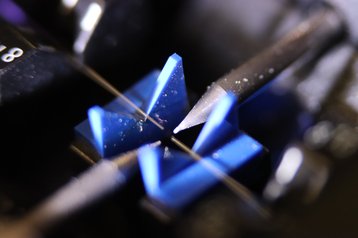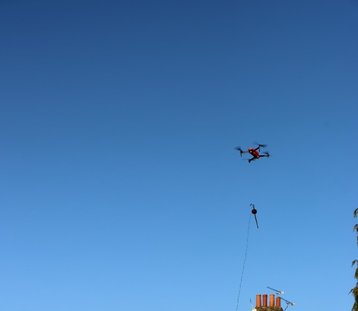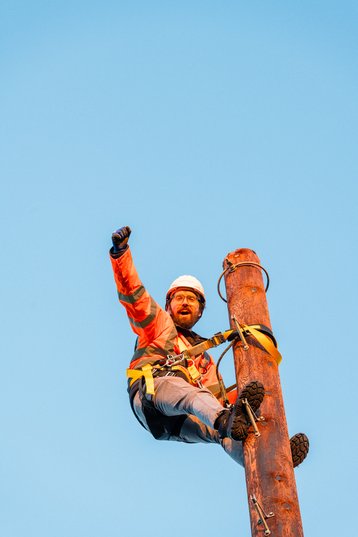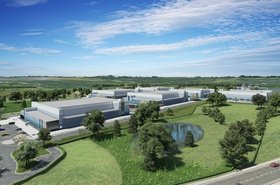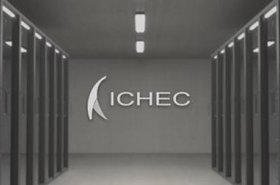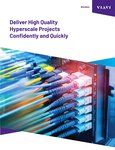In late December, Openreach announced that it had reached the halfway point for its fiber broadband rollout in the UK.
12.5 million homes are now directly connected to the independent BT subsidiary’s fiber broadband network. The telco is aiming to cover 25 million by 2026, and is delivering its “full fiber” broadband to an average of 6,000 premises a week.
DCD recently spent a day at an Openreach training center, to get a better grasp of what goes into deploying and maintaining fiber networks.
“We are building at a furious rate, further and faster than any other network provider,” says Openreach MD for corporate affairs Catherine Colloms. “In terms of Openreach and its position in the UK, we want to be the national full fiber provider.”
Its network is used by more than 650 Internet service providers (ISPs), including Sky, BT, TalkTalk, and many more.
Fiber goes further
Britain built out its copper landline network over a period of some hundred years, beginning in 1881. When data arrived, broadband services pushed the limits of what copper lines could do. More was needed.
Fiber optic cables, first made practical in 1965, were the answer. They first arrived in the home broadband network in 2011 and, since then, the rollout has been quicker than copper.
But first fiber links were fed to roadside cabinet, delivering up to 100Mbps over the final few hundred yards of copper.
Realistically, however, most in the country do not live that close to the cabinets, causing speeds to plummet dramatically.
More recently, fiber to the home (FTTH) has appeared, allowing gigabit speeds for some 15 percent of the population.
Fast as this sounds, the UK’s fiber rollout is terribly slow in comparison with other countries. The country has languished near the bottom of the international leagues for broadband speeds, with the regulator Ofcom quoting a current average of 69.5Mbps.
Openreach says this will change. A single strand of a fiber cable can provide enough capacity to serve up to 32 individual properties with gigabit speeds, and the infrastructure firm says that it has 29,000 field engineers who can splice around 30,000 fiber optic cables a day, as it adds fiber across the nation.
Given the topology of the UK, laying that fiber cable isn’t always as simple as just digging up a road.
In some instances, especially in remote rural areas, there’s very little knowledge of the surrounding areas and where/how best to install a fiber cable.
To speed up the process, Openreach has turned to DJI Drones to help overcome obstacles such as trees, rivers, and valleys. It’s also seen as a safer method for workers, especially in hazardous areas.
Openreach’s DroneOps division currently has 22 trained pilot crews across the country.
“I think we’re one of the only companies using drones to build our fiber networks,” an engineer at Openreach said. The company has been using drones for around five years.
“With the drone, we’ll fly over potential obstacles, and we’ll attach the cable that will be attached to be erected on the poles and then pull it back. This will save our engineers having to climb onto buildings, etc,” they said.
What about the copper?
As Openreach continues to deploy its fiber network, this means the aging copper infrastructure is becoming increasingly redundant.
In September, Openreach confirmed it had stopped selling new voice copper telephone lines on its national network after more than a century, and plans to retire the copper-based public switched telephone network (PSTN) by the end of 2025.
“We all knew at Openreach that full fiber would be the future,” Colloms says, noting its reliability and speed enable it to offer a significant upgrade on copper networks.
“Fiber doesn’t suffer from some of the problems that occur with copper. It has lower latency and offers greater reliability. Unlike copper, which does not particularly like the British environment or water, nor certain things it interacts with, including revving motorbikes.”
That copper will eventually all be pulled out and recycled.
Doing so will have another green benefit: At present, the whole of BT uses one percent of the UK’s total electricity. Some of that will be powering Openreach’s network, and fiber will use significantly less power.
Protecting the copper
Copper has another negative: It’s valuable. Thieves often rip up lines and steal the metal to re-sell for scrap.
It’s led to multiple outages, and in some cases left small towns and villages cut off. The issue is even worse in the winter months.
Openreach told DCD last year that it has stepped up security at its sites to prevent copper theft.
“Openreach’s network is protected by an alarm system which notifies any malicious cut or theft,” says Richard Ginnaw, senior security manager, Openreach.
“Our dedicated security team investigates all malicious network incidents. They work closely with the police and law enforcement agencies to arrest and prosecute anyone causing malicious damage or stealing from the network.”
Ginnaw says that security enhancements are installed in the network infrastructure in areas where the risk is high, while cables are also protected with a forensic marking solution, and all street cabinets are locked.
“The security team conducts patrols where there is a known risk to the network and will deploy covert devices to monitor and protect the network from any attacks.
The team also works closely with Crimestoppers in gathering information on offenders who target the network,” he added.
But, with fiber made out of glass, there’s little incentive to steal it, and so this issue will become redundant in the future.
Cashing in
Full fiber connectivity is tipped to add £72 billion ($91.5bn) to the British economy, according to the Centre for Economics and Business Research.
Openreach’s £15bn ($19bn) fiber buildout hopes to get the country there. But, with half of its build still to go, only time will tell if the company - and the country - can reap the rewards.

